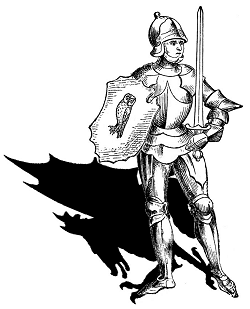 It had to happen eventually. I decided it was time I nailed my colours to the mast and said what I actually think about consciousness in book form: and here it is (amazon.com, amazon.co.uk). The Shadow of Consciousness (A Little Less Wrong) has two unusual merits for a book about consciousness: it does not pretend to give the absolute final answer about everything; and more remarkable than that, it features no pictures at all of glowing brains.
It had to happen eventually. I decided it was time I nailed my colours to the mast and said what I actually think about consciousness in book form: and here it is (amazon.com, amazon.co.uk). The Shadow of Consciousness (A Little Less Wrong) has two unusual merits for a book about consciousness: it does not pretend to give the absolute final answer about everything; and more remarkable than that, it features no pictures at all of glowing brains.
Actually it falls into three parts (only metaphorically – this is a sturdy paperback product or a sound Kindle ebook, depending on your choice). The first is a quick and idiosyncratic review of the history of the subject. I begin with consciousness seen as the property of things that move without being pushed (an elegant definition and by no means the worst) and well, after that it gets a bit more complicated.
The underlying theme here is how the question itself has changed over time, and crucially become less a matter of intellectual justifications and more a matter of practical blueprints for robots. The robots are generally misconceived, and may never really work – but the change of perspective has opened up the issues in ways that may be really helpful.
The second part describes and solves the Easy Problem. No, come on. What it really does is look at the unforeseen obstacles that have blocked the path to AI and to a proper understanding of consciousness. I suggest that a series of different, difficult problems are all in the end members of a group, all of which arise out of the inexhaustibility of real-world situations. The hard core of this group is the classical non-computability established for certain problems by Turing, but the Frame Problem, Quine’s indeterminacy of translation, the problem of relevance, and even Hume’s issues with induction, all turn out to be about the inexhaustible complexity of the real world.
I suggest that the brain uses the pre-formal, anomic (rule-free) faculty of recognition to deal with these problems, and that that in turn is founded on two special tools; a pointing ability which we can relate to HP Grice’s concept of natural meaning, and a doubly ambiguous approach to pattern matching which is highlighted by Edelman’s analogy with the immune system.
The third part of the book tackles the Hard Problem. It flails around for quite a while, failing to make much sense of qualia, and finally suggests that in fact there is only one quale; that is, that the special vividness and particularity of real experience which is attributed to qualia is in fact simply down to the haecceity – the ‘thisness’ of real experience. In the classic qualia arguments, I suggest, we miss this partly because we fail to draw the correct distinction between existence and subsistence (honestly the point is not as esoteric as it sounds).
Along the way I draw some conclusions about causality and induction and how our clerkish academic outlook may have led us astray now and then.
Not many theories have rated more than a couple of posts on Conscious Entities, but I must say I’ve rather impressed myself with my own perspicacity, so I’m going to post separately about four of the key ideas in the book, alternating with posts about other stuff. The four ideas are inexhaustibility, pointing, haecceity and reality. Then I promise we can go back to normal.
I’ll close by quoting from the acknowledgements…
… it would be poor-spirited of me indeed not to tip my hat to the regulars at Conscious Entities, my blog, who encouraged and puzzled me in very helpful ways.
Thanks, chaps. Not one of you, I think, will really agree with what I’m saying, and that’s exactly as it should be.
